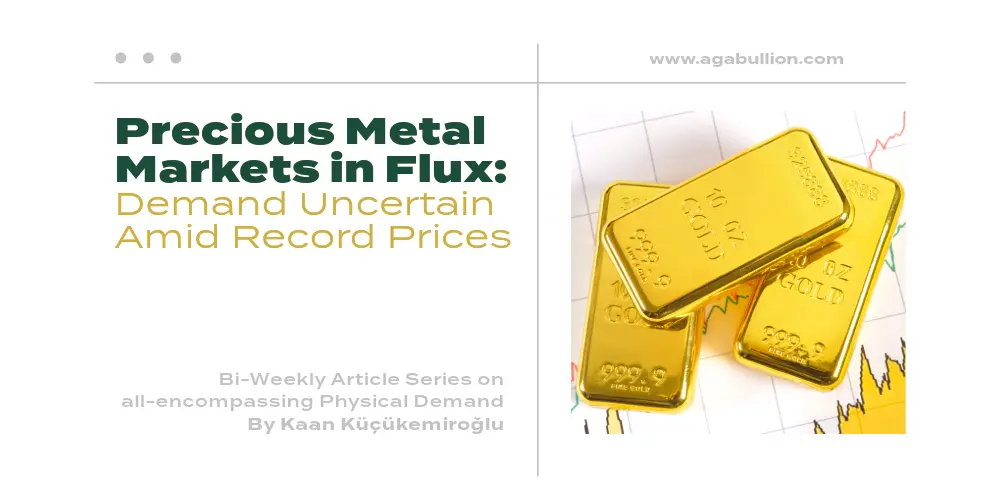With both gold and silver prices reaching new record highs, now well above $2,700 per ounce and $33 per ounce respectively, the implications for physical demand in the precious metals market warrant close attention.
Recent data reveals that production among major mints remains below levels recorded in Q1. Certain production lines, particularly for silver, are slated for suspension in Q4 due to very weak demand for the white metal, underscoring a continued decrease in physical output. However, Q3 showed modest improvement for most mints compared to Q2, pointing to a partial rebound in demand through increased production of new coins and bars. Despite these gains, the current production is notably lower than in previous years. For instance, the demand seen in 2022 led to production highs across all major mints, which were two to three times greater than current volumes.
On the retail front, demand for bars and coins is showing subtle signs of recovery, with a slightly greater uptick in the U.S. than in Europe, a trend that has persisted for several quarters. In Q2 2024, many major European bullion dealers reported that buybacks of older coins surpassed new coin sales, prompting a temporary reduction in new coin production. This shift reflects a broader hesitancy among European investors to commit to high-priced new gold assets, particularly given economic uncertainties. However, with prices holding strong, demand has inched upward, though still under historical highs it saw back in 2022.
For physically backed ETFs, the situation remains relatively stable compared to the fluctuations seen in bar and coin demand. By September 2024, global ETF holdings reached approximately 3,200 tonnes, the highest level since December of the previous year. Despite this growth, ETFs remain roughly 20% lower than their Q3 2020 high of 3,800 tonnes. Analysts note that ETFs have provided a steady investment vehicle amid price volatility, with investors taking a more measured approach to exposure compared to the physical market.
Meanwhile, central banks have maintained a robust purchasing trend for over a year, driven by economic and geopolitical concerns. Since June 2023, global central bank purchases have remained net positive, reflecting broad, sustained demand. Poland, China, India, and Türkiye are leading buyers, with Türkiye marking its fifteenth consecutive month of gold acquisitions. Central banks' gold accumulation is widely seen as a buffer against global market fluctuations, particularly with recent events heightening financial uncertainties.
Looking ahead, both new sales and buybacks of gold and silver may continue to be constrained. Geopolitical and economic uncertainties, including the U.S. elections, ongoing tensions between Iran and Israel, and the prolonged conflict in Ukraine, create a complex landscape for precious metals investors. These factors contribute to a broad reluctance among holders to part with their assets, while simultaneously fuelling the demand that has propelled prices upward.
Some experts suggest that new purchases are slightly dampened by the significant gains in gold prices earlier this year. Many investors took advantage of lower prices in Q1, with gold averaging around $2,070 per ounce, significantly below the current near-$2,750 per ounce level. This price increase may deter new buyers unwilling to pay the current premium, though strong global demand is expected to support prices in the short term.
In conclusion, the physical demand landscape for precious metals is marked by uncertainty and mixed trends. While production levels show slight improvement, they remain far below peak levels, and retail demand is modestly stronger but still hesitant, particularly in Europe. With central banks continuing to buy and prices climbing, the dynamics of supply, demand, and investment sentiment will likely stay complex as 2024 comes to a close.







